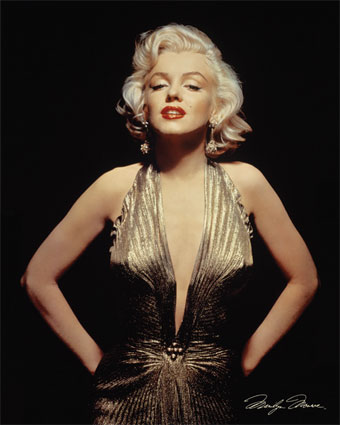Colour analysis, also called skin tone color matching or color seasons, is the process of finding colors of clothing and makeup to match a person's complexion, eye color, and hair color. It is often used as an aid to wardrobe planning and style consulting.
Color analysis is the process of determining the colors that best suit an individual's natural coloring. There are several means of analysing personal coloring. The most well-known is "seasonal" color analysis, which places individual coloring into four general categories: Winter, Spring, Summer and Autumn. "Winters" and "Summers" have cool coloring. Some clues that a person has cool coloring might include ash tones in the hair, grey-blue eyes and pinkish undertones to the skin. "Springs" and "Autumns" have warm coloring. Some signs of warm coloring are red or golden hair, golden brown eyes and golden undertones to the skin.
Winter
Winter is, along with Summer, one of the two "cool" (i.e. blue-based) palettes. This means that a person who is a Winter should wear colors that have blue undertones. Winters differ from Summers in that their skin tends to contrast dramatically with their hair and eye color, and therefore seem “intense.”[14] This means that they look best when dressed in colors that are relatively more intense, and that contain sharper contrasts, than would look best on a person belonging to the other "cool" season (Summer). When dressed in the strongly contrasting colours that suit them best, Winters look “intense”, “pure” and “clean”.[14] When Winters dress in less intense or highly contrasting colours, the strong contrasts between their skin on the one hand and their hair and eyes on the other will seem “washed out.”
Summer
Summer is, along with Winter, one of the two "cool" (i.e. blue-based) palettes. This means that a person who is a Summer should wear colors that have blue undertones. Summers differ from Winters in that their skin tends to contrast gently with their hair and eye color, and therefore seem “softer” and “less intense.” This means that they look best when dressed in colors that are also relatively softer or less intense, and that contain less dramatic contrasts, than the colors which look best on a person belonging to the other "cool" season (Winter). When dressed in the less strongly contrasting colours that suit them best, Summers look “harmonious” and “subtle.” When Summers dress in more intense or highly contrasting colours, the gentle contrasts between their skin on the one hand and their hair and eyes on the other will seem “overpowered.”
Spring
Spring is, along with Autumn, one of the two "warm" (i.e. yellow-based) palettes. This means that a person who is a Spring should wear colours that have yellow undertones. The main difference between Spring and Autumn colour palette is that the Spring's colours are based on yellow such as yellow sparkling gold, in contrast with Autumn's colours which are based on deep gold. As a result spring's colours are intense, often bright and playful.
Autumn
Autumn is, along with Spring, one of the two "warm" (i.e. yellow-based) palettes. This means that a person who is an Autumn should wear colors that have yellow undertones. Generally the autumn colours are warm, soft, and deep. Some of the autumn colours are brick, coffee, caramel, beige, tomato red, forest green.People who fall under this category usually have brown hair with golden or red undertones but a person with almost black hair and skin with yellow undertones can find him or herself to be an autumn too.
Carpe diem xx

No comments:
Post a Comment